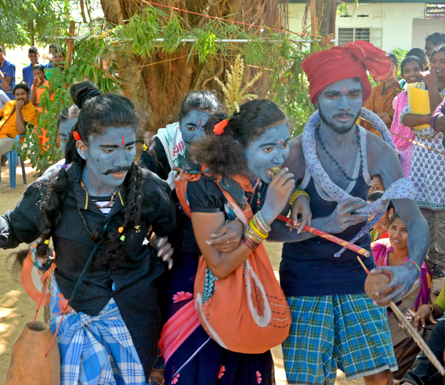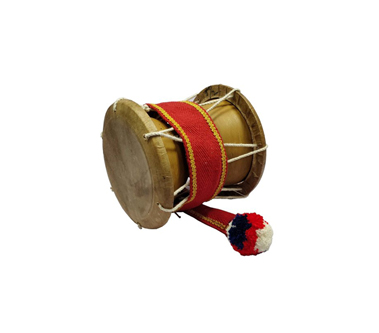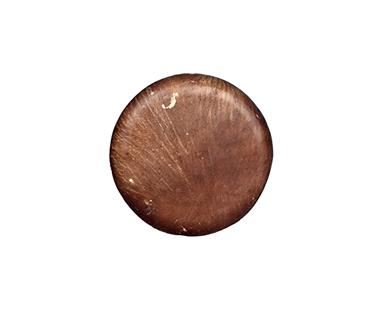
Kooththuis a Tamil traditional and collective community art form performed in a Vattakkalari where dance, song and acting performed together by Kooththuartists. The traditional Kooththudrama performed among Tamil community particularly in Batticaloa, Sri Lanka is known as ‘collective community theatre rather than an institutional (official) theatre prevailing in the west. Interpreting Kooththuas ‘collective community theatre’ as a result of the involvement of a segment of community is a problematic, as there is a clear boundary drawn in terms of caste difference and status. Kooththuis generally performed by a group of caste collectively particularly at village level. However, the audience are from different caste groups irrespective of caste backgrounds. It is not just a performance staged for the sake of aesthetic and leisure purposes but performed for community’s socio-economic and cultural wellbeing, community gathering, expression of talent, (caste, class and individual) identity and motivation. The community takes part in the process of Kooththuperformance, which has been taking place for several months. Those who perform Kooththudo not involve in Kooththuperformance as their full-time job or see it as their profession/job for earning money. Kooththuartists do engage in different employments such as fishing, agriculture, barber, washer-men, drummers, carpentry, and masonry and so on for their livelihoods and also involve in Kooththuperformance particularly at night. Rehearsal for Kooththuin traditional Batticaloa society had been undertaken for several months and sometime a year on a stage called Vattakkalari, which is an open and round constricted staged in a community ground where audiences reside around the stage. Vattakalari is used for rehearsing Kooththuand performing Kooththu.These practices made the entire community knowing about Kooththuand also induced young people to participate in such Kooththuperformance. Kooththuis not seen as money-earning profession as other arts forms such as Baratanattiyam and Music prevailing among Tamil community in Batticaloa and elsewhere in Sri Lanka.




Annäviyaris the key person in Kooththu.His role in Kooththucan be translated as director. He is a person who can sing songs, dance and play musical instruments, which are some key essential qualification in directing Kooththu.There are two kinds of Annäviyarnamely Ettu Annäviyarand Annäviyar. Ettu Annäviyaris a prompter who initiates the beginning of the songs (word or sentence) for the Kooththuartists. This helps the artists to remember the songs, which they expect to sing on the stage. He is an educated person who can read and write. However, Annäviyarhas bigger role than Ettu Annäviyarin terms of performance of the artists. Annäviyaris not necessarily an educated person. He is usually a respectable person in society and playing multiple roles.
Apart from the performance of Kooththuon an open stage, a number of arrangements have been undertaken prior to Kooththu.These arrangements are generally known as decision-making, Munnidu Kärar(producer), Sattam Koduttal/ Pättirat Terivu(agreement between artists and director/selection of role), Salangai Kattutal(wearing musical anklet) Ottikai(rehearsal) and Arañkerram (stage).The entire community (family, friends and relatives) takes part in each arrangement of these processes. Thus, it can be said as collective ritual performance where the artists and community gather together and perform together on the stage and off-stage. The digitalisation of Kooththuessentially requires recording the entire processes in its natural settings rather than Kooththuperformed on the stage.
The Kooththuwhich, are appreciated by the community and have a standard in its performance, will be also invited to perform during the temple festival particularly at the end of temple annual festival. The each artist will be paid by the temple committee or those who hair the Kooththu. Kooththuat temple is performed for entertaining the devotees. This is the part of reason that Kooththu in Batticaloa is ascended during the period of temple festival (April – September). However, the rehearsal for Kooththu is started on January onwards.
Kooththuboth in traditional and contemporary Batticaloa has been performed by all caste groups without mixing them in one Kooththu at community/village level. For example, if a Kooththuis performed by Mukkuvar, the other caste groups such as Paraiyar is not be given a role. The character of Paraiyar in the Kooththuis performed by a person from Mukkuvar. In an Annäviyar’s (Mukkuvar) word:
“The character of Paraiyar in our Kooththuis performed by our caste boy (Eñkada Pediyan), he performed well. Our people (our caste group) are now kidding him by calling Parai in front of his name (for example Parai Mohan). He is not going to perform the role this time. However, we will find a person again within our caste".
He also indicates that women do not usually come forward to take part in Kooththu.The character of female is played by male. It is also difficult to find female character performed by man. According to the ‘upper caste’ Annäviyar,there is a scarcity in finding the character of ‘lower caste’ and female for performing Kooththuwithin his caste group. However, I could not find an Annäviyar from ‘lower caste’ background in my short visit in Batticaloa. I also believe that a ‘lower caste’ Annäviyarmay differ from what the ‘upper caste’ Annäviyar said. Due to the caste orientation of Kooththu,it is also argued that preserving Kooththuin its traditional form by limiting to a particular caste group at each village in Batticaloa will lead to consolidation of caste in Kooththutheatre.
The academics like Dr. Jesangar and his followers believe that reformulation of Kooththushould be taken place in the ground where the Kooththuhas been performed by challenging the exiting notion caste, gender and ideological presentation (the way in which the themes are presented in Kooththu.)By saying that, a group of academic attempt to open a discussion on the exiting forms of Kooththuand its ideological construction of moral and immoral, justice and injustice, war for justice, power relation, gender issues and casteism among the Kooththuartists and community. They call it as reformulation of Kooththu.This has also created a space for the local artists including Annäviyarclosely working with the university staff and students.
However, Prof. Maunaguru and his followers who came from the academic tradition by researching on Kooththufollowing Vidhiyananthan’stradition of modernisation of Kooththuattempt to popularise Kooththuamong students, educated and upper middle groups across ethnicities. The modernisation of Kooththuessentially requires some fundamental changes on where it should be performed, who performs, and how it should be performed. As a result, the traditional open stage theatre Vattakkalaribecame as closed art theatre where the audience are seated in one side. School and university students without caste, class, gender and ethnic difference participate in Kooththu. It has been performed throughout the country. New musical instruments such as the Violin, the Keyboard, the Harmoniyam and the Mirutangam have been played in this modern Kooththuart. The style of dance and the rhythm of song have been undergoing changes incorporating different style played in other art forms such as Baratanättiyam.The criticism against this modern theatre of Kooththuis that it destroyed the traditional way of Kooththuperformance such as the process of Kooththu,community participation, and the places where it has been performed. Therefore, it is argued that modernisation of Kooththucannot be called as Kooththu. It is a ‘Kooththu-based drama’ in which elements of Kooththuhave been used, performed and experimented.
Kooththuis often used by academics, politicians and militant movements, as their indigenous/traditional art form in the nation-building project. It is prof. S. Vithiyananthan who attempted to popularise Kooththuin academic institutions and educated and upper middle class audiences across ethnicities. In the post-colonial Sri Lanka, the Tamil ethnic identities such language and territorial belonging have been challenged due to the language policy and development projects undertaken by the majority Sinhala political leadership and government. It was the time during the 1950s and 60s, Tamil intellectuals attempt to search their root, belongs and origin. Kooththu,(the village drama) was recognised as Tamil national art form.
However, the content of Kooththuhas been changing overtime in responding to the contemporary political and ethnic crisis in Sri Lanka. For example, the elements of Kooththuare used by the LTTE for their propaganda and criticising the political violence of government body. The Jaffna university academics used the elements of Kooththuin Pongu Tamil. The local artists in Batticaloa now use Kooththufor condemning the local political leaders and businessmen. Thus, the elements of Kooththuhave been highly used by artists, academics and militant movement for their own agenda.
One important difference between Kooththuperformance in Sri Lanka and Tamil Nadu, India is that Sri Lankan Tamils see their Kooththuas their national art form whereas Tamil Nadu Tamils sees it as ritual performance. While it is performed by all caste groups in Sri Lanka whereas it is only associated with a particular caste group in Tamil Nadu, India. Kooththuin Sri Lanka is seen as an identity of Tamil, whereas Kooththuin Tamil Nadu is seen as a ritual art form only associated with certain caste groups.
There are two perspectives on reformulation of Kooththu. One is on modernisation of Kooththuin responding to the global culture and neo-liberalisation. Prof. S. Vithiyananthan has initiated in popularising Kooththu by performing in theatre auditorium where the audiences are seated in one side. The elements of Kooththu have been used for this performance. New ideas and techniques used for other art forms such as Baratanattiyam, Kandiandance, Katakand so on can also be used for this reformulation. The experiment for strengthening the aesthetic aspect of Kooththuis highly valued here. Prof. Maunaguru and his followers have been now popularising this art form across the different ethnic groups in Sri Lanka.
However, as the traditional way of performing Kooththu such as the process of Kooththu, community involvement, places where it has been performed and so on cannot be seen in this form of Kooththu, another group of academics see it as a drama performed incorporating some elements of Kooththu. It is particularly Dr. Jesangar and his followers argue that ‘the practice of Kooththu is more than just what is performed on a stage. The process of development of the story, which involves a range of community members, is an important aspect of the Kooththuart as well as a space for democratic practice that is lost, if Kooththu is reduced to a professional performance’. According to the later view, the reformulation should be taken place at the community level where the Kooththu has been traditionally performed. It cannot be done in the modern stage taking its ownership from the traditional Kooththu performing community. The space for reformation in terms of its story, constructed ideology on war, love, gender, caste and so on should be created in the ground level rather than academic levels. This could be actual reformulation of Kooththu according to the later academic tradition on Kooththu reformulation.
There are two perspectives on reformulation of Kooththu. One is on modernisation of Kooththuin responding to the global culture and neo-liberalisation. Prof. S. Vithiyananthan has initiated in popularising Kooththu by performing in theatre auditorium where the audiences are seated in one side. The elements of Kooththu have been used for this performance. New ideas and techniques used for other art forms such as Baratanattiyam, Kandiandance, Katakand so on can also be used for this reformulation. The experiment for strengthening the aesthetic aspect of Kooththuis highly valued here. Prof. Maunaguru and his followers have been now popularising this art form across the different ethnic groups in Sri Lanka.
However, as the traditional way of performing Kooththu such as the process of Kooththu, community involvement, places where it has been performed and so on cannot be seen in this form of Kooththu, another group of academics see it as a drama performed incorporating some elements of Kooththu. It is particularly Dr. Jesangar and his followers argue that ‘the practice of Kooththu is more than just what is performed on a stage. The process of development of the story, which involves a range of community members, is an important aspect of the Kooththuart as well as a space for democratic practice that is lost, if Kooththu is reduced to a professional performance’. According to the later view, the reformulation should be taken place at the community level where the Kooththu has been traditionally performed. It cannot be done in the modern stage taking its ownership from the traditional Kooththu performing community. The space for reformation in terms of its story, constructed ideology on war, love, gender, caste and so on should be created in the ground level rather than academic levels. This could be actual reformulation of Kooththu according to the later academic tradition on Kooththu reformulation.
| Comparative Perspectives on Kooththuin Batticaloa | ||
|---|---|---|
| Prof. Managuru | Dr. Jesangar | Performers (Annaviyar) |
| Experiment of Kooththu can be taken place on a (modern) stage. | Experiment of Kooththu should be taken place in/with the community who perform Kooththu traditionally. | The community see the everyday difficulties in performing Kooththu (the following title is about the challenges faced by the local artists) |
| Elements from other art forms can be incorporated with Kooththu. | The originality should be maintained. Changes can be taken place with the consensus of Kooththu artists and community. | |
| Steps and style could be modified and changed in order to strengthen the ecstatic characters of Kooththu. | Steps and style can be modified by the performers themselves. | |
| Creating a middle class and educated groups in performing and participating in Kooththu art form. | Such participants should go to the traditional places where the Kooththu-takes place | |
| Kooththu should be strengthen through educational channel and institutions. | Kooththu should be strengthened through community collective participation | |
| Incorporating western and eastern art forms in Kooththu performance including music and performing style. | Certain style including musical instruments such as Mattalam, Parai and Uddukku should be highly valued. | |
| The traditional processes of Kooththu, the traditional way of development story and recollecting collective memory have not been seen here. | Processes of Kooththu, development of story, and recollecting memories, which have been taking place collectively at the community level, are viewed as some important aspects of Kooththu. | |
| Criticism against this reformulation is on lost of its traditional and fundamental aspects including naming it as Kooththu. | Criticism against this reformulation is that highly romanticizing the Kooththu. | |
The local artists see their Kooththu as an opportunity in expressing their talent, entertaining their community members, space for their community gathering and essential for their community wellbeing. It is believed that the community/village will be capable enough, if it is able to perform a Kooththu at-least once a year. It is also believed that performing Kooththu will bring the wealth, harmony and opportunity for the entire community.
Though the Kooththu is viewed as Tamil cultural art form, there is no an established local industry for producing essential equipment for performing Kooththu. The contemporary Kooththu particularly face the following difficulties due to lack of local industry to assist or provide essential equipment for performing Kooththu in Batticaloa: